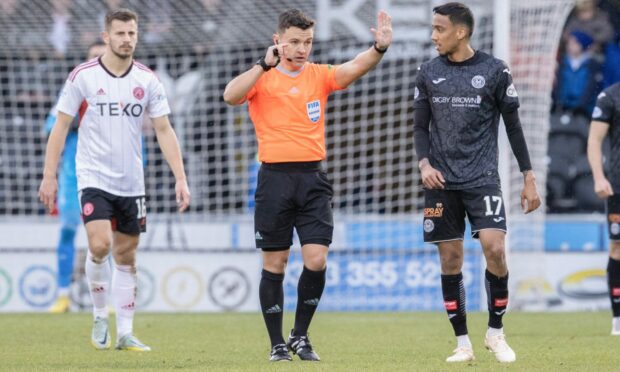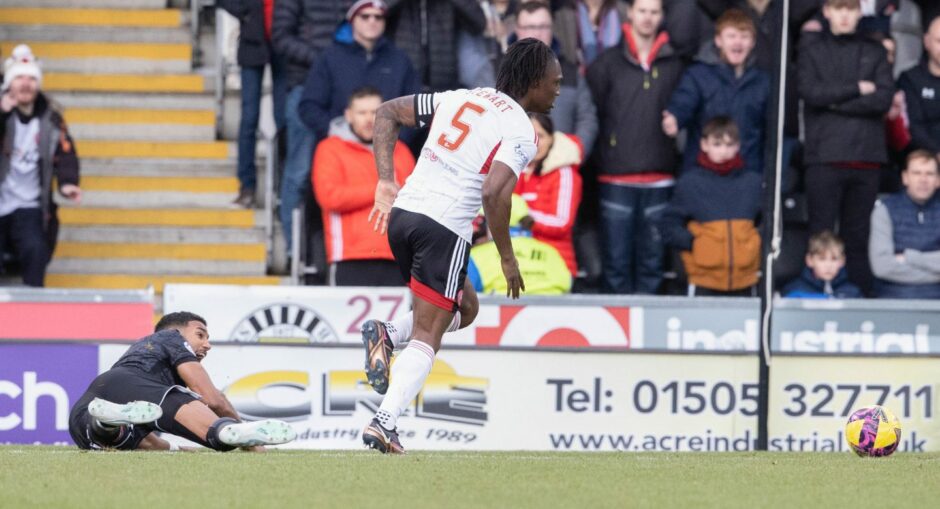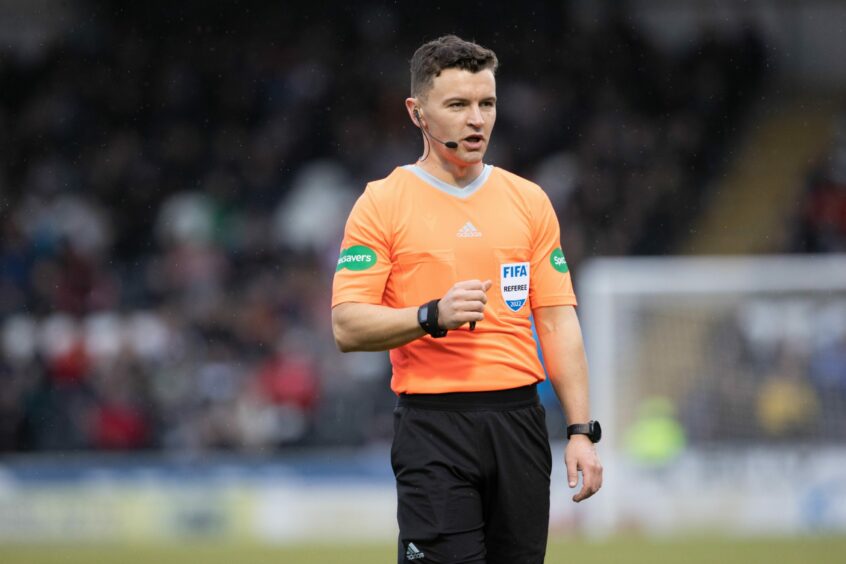Aberdeen travelled down to Paisley searching for their first victory since the World Cup break in what turned out to be a game defined by penalties.
The Dons took the lead from a fantastic strike by Matty Kennedy early on, which gave Aberdeen the perfect start.
Their fortunes were to change towards the end of the first half with the first big decision of the game.
After a slack first touch, Aberdeen captain Anthony Stewart saw the ball pinched off him by St Mirren forward Jonah Ayunga.
The Dons defender first tripped and then hauled the St Mirren player to the ground, initially seeing a free-kick given, which was swiftly followed by a red card.
I don’t think the red card can be questioned. It was a clear foul and denying a goalscoring opportunity, with no attempt to play the ball by the end of it.
It was a sloppy individual error which, after a VAR review, would cost Aberdeen even more.
Referee Nick Walsh was advised by VAR to award a penalty instead of the initially given free-kick.
After seeing it at the time and having watched the replays, it is an extremely tight call.
In the video, the foul initially starts outside the box, but does continue toward the penalty box line.
The forward’s upper body is over the line, but, though the point of contact with the feet is not, I do think a penalty was the correct call.
There is an initial pull and trip by Stewart, which is outside the box, but he does then follow this up with another pull of the arm.
Again, it is an extremely tight call, but I do think it was (just) a penalty.
I think pen was right call – but ref Walsh should have been allowed to make up own mind
I was, however, disappointed the referee was not called to the monitor to make his own decision.
For calls like that which are going to be debated, it is only fair the on-pitch referee gets a chance to review his call, as the referees should not just be being told what to give by VAR.
Many fans will be asking how Stewart was still sent off after the penalty was awarded.
Many will point to the “double jeopardy” rule which means players who give away a penalty while also denying of a goalscoring opportunity are only awarded a yellow card.
In these instances a penalty is deemed enough of a punishment.
However, double jeopardy only applies if the player is making a challenge for the ball.
Stewart’s foul was nowhere close to being a challenge to win the ball, hence why he was sent off regardless of whether it was a penalty or free kick.
😲St Mirren added to 10-man Aberdeen's woes by beating them despite missing two of their three penalties ⬇️ pic.twitter.com/b23kNlw2wP
— Sky Sports Scotland (@ScotlandSky) December 24, 2022
No doubt over second spot-kick
The Dons would then concede their second penalty of the game, which again was a calamity of individual errors.
The defence switched off when the ball deflected back to goalkeeper Kelle Roos and, with Ross McCrorie and Liam Scales caught watching the ball, former Aberdeen player Curtis Main was alert to nip in and take the ball away from Roos.
The Dutch goalkeeper caught the Englishman to give away a clear penalty.
The referee was spot on with this call. I don’t think there can be any debate on whether it was a penalty. The contact is slight, but it is definitely a penalty.
The lack of complaint from Roos also helps tell the story of his thoughts on the decision.
The third penalty decision
Aberdeen would concede yet another penalty in the game, and this time Roos would finally get his save.
The penalty again was a stonewaller, both Ross McCrorie and Liam Scales had nibbles on Ayunga as he burst into the box.
I think a yellow card was also the right decision as the ball is still there to be won, but it was potentially awarded to the wrong player, as it appears to be Scales who commits the final foul and not McCrorie.
Roos had his foot on the line so the penalty save was clean from a refereeing standpoint.
Added-on time trend continues
Finally, it is again worth mentioning the added-on time at the end of the game, with eight minutes added by the match officials.
With several subs and VAR checks, I wasn’t shocked by the time being added on.
As I mentioned after the Rangers game this will become a more regular occurrence, especially from the FIFA-listed officials.
- Finlay Elder has been a registered referee for six years and a category 5 official since 2019, with experience in the Highland League, juniors and Club Academy.



Conversation